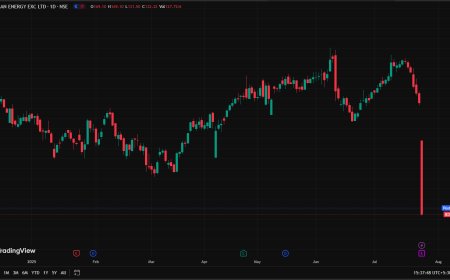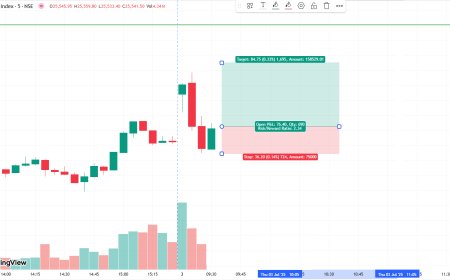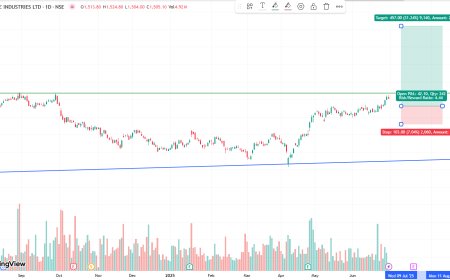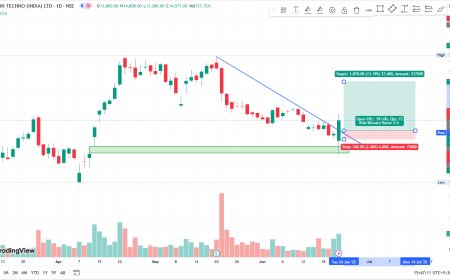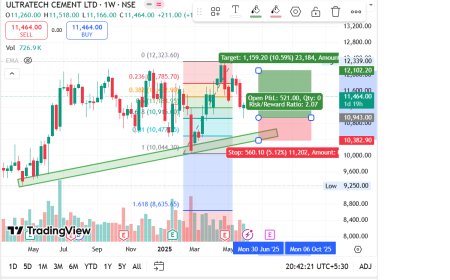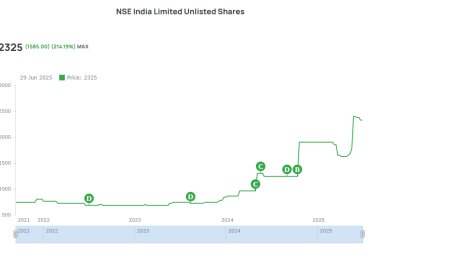FPI Assets Top $800 Billion After 4 Months as Markets Rebound on Eased Trade Worries
Foreign Portfolio Investors (FPIs) see a sharp rebound as total assets cross $800 billion, driven by easing trade tensions and improving global sentiment. Here's what it means for India's markets.

FPI Assets Top $800 Billion After 4 Months as Markets Rebound on Eased Trade Worries
By ASJ Ventures News Desk | 19 May 2025
After months of turbulent capital flows and choppy equity markets, Foreign Portfolio Investors (FPIs) have once again turned optimistic about India’s long-term growth prospects. In a significant milestone that reflects resurgent global confidence in the Indian economy, FPI assets have surged past the $800 billion mark for the first time in 2025, ending a four-month dry spell marred by geopolitical uncertainty, global inflation fears, and monetary tightening.
This milestone is a strong signal of renewed interest in Indian equities and debt markets, particularly as trade-related anxieties show signs of easing and central banks globally begin to pivot toward a less hawkish stance.
A Powerful Rebound in FPI Sentiment
Data released by the National Securities Depository Limited (NSDL) reveals that FPI assets under custody climbed to $803.6 billion as of May 17, 2025 — a remarkable recovery from the $742 billion recorded at the end of January. This sharp uptick is being attributed to a combination of softer U.S. inflation, rebounding Indian corporate earnings, and clarity on global trade policies, especially between major economies such as the U.S., China, and the European Union.
What Sparked the Turnaround?
Just a few months ago, FPIs were in risk-off mode, aggressively pulling out funds from emerging markets like India amid fears of prolonged monetary tightening by the U.S. Federal Reserve and an escalating tariff war between China and the West.
However, a series of diplomatic negotiations in March led to breakthroughs on multiple tariff-related fronts. The U.S. rolled back several tariff hikes imposed in 2023, while China reciprocated with structural trade concessions. The ripple effect of these agreements not only restored investor confidence globally but also boosted optimism about emerging market resilience.
Where Is the Money Flowing?
The biggest beneficiaries of this FPI comeback are sectors that had been underweight for months due to their sensitivity to global shocks:
1. Banking and Financial Services
-
FPIs have turned net buyers in both private and public sector banks.
-
Recent Q4 earnings from ICICI Bank, Axis Bank, and SBI have exceeded expectations.
-
Net FPI inflows into banking stocks alone touched ₹15,600 crore over the past 30 days.
2. Information Technology
-
With global tech spending stabilizing and the rupee remaining range-bound, IT stocks are once again looking attractive to offshore investors.
-
Heavyweights like TCS and Infosys saw renewed FPI interest after strong forward guidance.
3. Capital Goods & Manufacturing
-
The government’s push under the PLI (Production Linked Incentive) scheme and Make in India 2.0 campaign has begun yielding visible results.
-
FPIs are optimistic about capital expenditure trends in India, as seen in inflows into stocks like L&T, Siemens, and ABB India.
Bond Markets Are Also In Play
While equities are driving the bulk of FPI inflows, the Indian debt market is also witnessing renewed traction. The inclusion of Indian government bonds in JP Morgan’s Emerging Market Bond Index, scheduled for June 2025, has played a pivotal role.
According to analysts, FPI investments in Indian debt instruments have jumped by $4.3 billion over the last two months, particularly in long-duration G-Secs and SDLs (State Development Loans).
Experts Speak: What This Means Going Forward
Dr. Meera Krishnamurthy, Chief Economist, BNY Mellon India:
“Crossing the $800 billion threshold is psychologically important. It reflects not only market gains but also portfolio rebalancing by global funds that are preparing for a soft landing globally. India remains among the top three EM destinations for FPI allocations in 2025.”
Rajeev Mittal, Head of FPI Desk, HDFC Securities:
“There’s a marked shift in FPI behaviour — from short-term arbitrage to strategic allocations. Expect more passive inflows through ETFs and index trackers post-bond index inclusion.”
Risks That Still Linger
Despite this bullish turnaround, risks remain. The upcoming U.S. presidential elections, fluctuating crude oil prices, and any resurgence in Middle Eastern conflict could alter the risk landscape. Additionally, India's own general elections in 2026 could pose event-driven volatility that FPIs will be closely watching.
Furthermore, concerns around valuation — especially in the mid- and small-cap segments — are beginning to surface as Nifty trades near 23,000 and Sensex flirts with the 77,000 mark.
FPI Investment Trend: Quick Snapshot (Jan–May 2025)
| Month | Net Equity Inflows (₹ Cr) | Net Debt Inflows (₹ Cr) | Total AUM ($ Bn) |
|---|---|---|---|
| January | -12,452 | -4,150 | 742.3 |
| February | +3,860 | +1,010 | 755.9 |
| March | +8,540 | +1,845 | 768.7 |
| April | +13,900 | +2,425 | 789.5 |
| May (Till 17th) | +18,220 | +2,660 | 803.6 |
Source: NSDL, RBI, SEBI
India’s Macro Outlook Is Fueling The Bull Run
The rebound in FPI confidence is well-supported by domestic macroeconomic strength:
-
GDP growth for FY25 is pegged at 7.2%, among the highest globally.
-
Retail inflation eased to 4.4% in April, allowing monetary room.
-
Forex reserves hit a 6-month high of $655 billion, strengthening the rupee and bolstering foreign investor security.
Retail Investors Still Hold The Fort
Interestingly, while FPI flows dominate the headlines, retail investors have consistently been strong buyers even during the lull. Mutual fund SIPs touched an all-time high of ₹19,750 crore in April 2025, indicating robust domestic conviction — an essential buffer against future volatility.
Is the $1 Trillion Milestone Next?
With global dynamics improving, FPIs diversifying across asset classes, and India’s policy landscape staying investor-friendly, the $1 trillion AUM mark no longer seems a distant dream. Experts say that if this momentum sustains through Q2 and Q3, it’s likely that we’ll see FPIs becoming even more entrenched in the Indian growth story.
But investors should stay vigilant. While the optimism is real and the fundamentals solid, global capital is always quick to change direction at the first signs of risk. For now, though, India seems to be back on the global radar — not just as a safe haven, but as a growth engine for the decade ahead.
Stay tuned for real-time updates, exclusive interviews, and daily market insights with ASJ Ventures.
#asjventures #stockmarketnews #FPI
What's Your Reaction?
 Like
0
Like
0
 Dislike
0
Dislike
0
 Love
0
Love
0
 Funny
0
Funny
0
 Angry
0
Angry
0
 Sad
0
Sad
0
 Wow
0
Wow
0





































